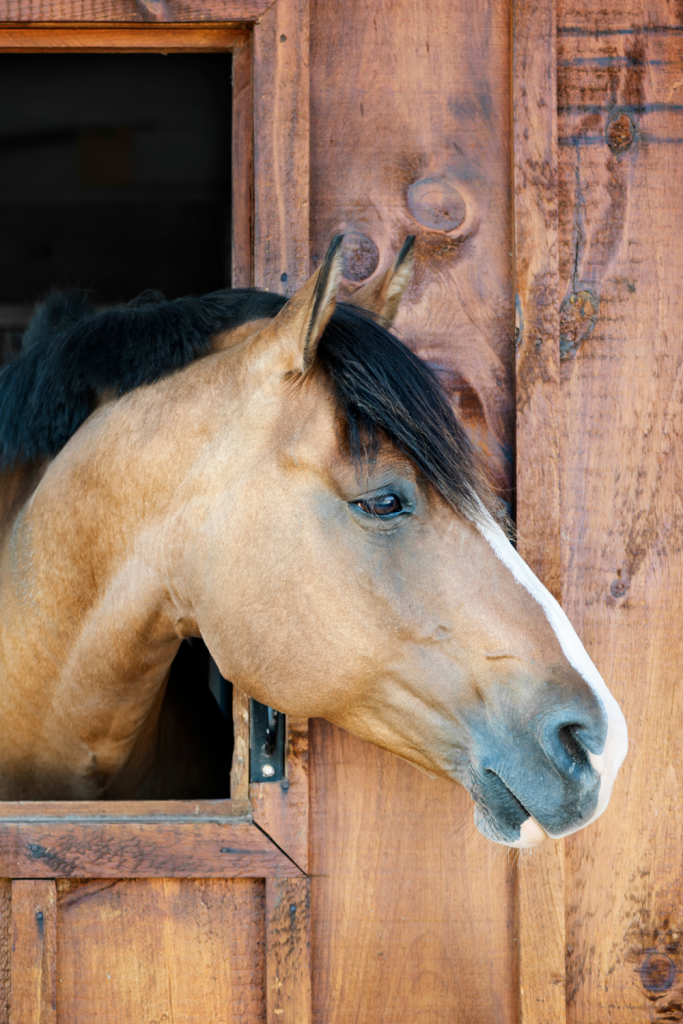
Animal Reiki Tips: Staying Safe during an Animal Reiki Session
Practicing Animal Reiki can be one of life’s great joys, especially for animal lovers. Being able to connect to and help animals, whether professionally for clients or for your own pets is so rewarding.
Animal Reiki can be a powerful tool for promoting the well-being of animals when practiced with care and respect. And while it can offer significant benefits, ensuring safety during these sessions is paramount. Safety should always be a top priority for both practitioners and pet owners, and the animal client themselves, which is why we wanted to share some tips for maintaining a safe environment during an Animal Reiki session.
Understanding Animal Reiki
Before diving into safety measures, it’s essential to understand some of the basics of Animal Reiki as this will influence how you work through a session.
Intention: Practitioners must approach Animal Reiki with a pure intention to provide healing and support to the animal. It’s crucial to respect the animal’s boundaries and consent. You are not in control of the outcome, you are just a channel for Reiki to flow where it is needed for the highest good of the animal.
Energy Flow: Reiki practitioners can use their hands to channel healing energy in a session with an animal, but distant Reiki techniques can also be used to work through a session, so you should never feel forced to work with an animal hands-on. For distant sessions, maintain a strong intention and connection with the animal’s energy.
Animal-Centered Approach: Animal Reiki is all about the well-being of the animal. It’s not about imposing our will or desires on them. Respect and compassion are key. It is a partnership, and every session will be different based on the animal’s needs.
When working with animals understanding their body language is key. During a session with a human client, you naturally have a lot more information upfront about your encounter: e.g. they have consented to having a Reiki session with you, you both have an expectation of how long the session will last (e.g. 45 minutes), they may inform you if they are excited/looking forward to the session or a bit unsure about trying out Reiki for the first time.
When working with an animal client, you really do need to lean into understanding their communication signals and body language. A dog may not be able to verbally say “Yep, that was lovely but I want to go into the garden now, thanks very much” but if they wander off half way through a session you know they have had enough. It is really important to respect their comfort and carefully respond to their reactions and behavioural changes whilst listening to your own intuition to guide you through the session. If the animal appears anxious, agitated, or stressed, it may not be an appropriate time for a Reiki session.

Why is safety so important for Animal Reiki?
Safety is of paramount importance in Animal Reiki for several reasons. It safeguards the well-being of animals, maintains ethical standards, builds trust with animals and their owners, prevents harm to practitioners, and upholds the credibility of this holistic healing practice. Prioritizing safety is essential for fostering a positive and effective environment for both the animals and the practitioners involved.
Ethical Responsibility: Practitioners have an ethical responsibility to treat animals with care, respect, and compassion. Failing to prioritize safety can result in physical or emotional harm to the animals, which goes against the core principles of Animal Reiki.
Practitioner Safety: Working with animals, especially those in distress or pain, can pose risks if safety precautions are not taken. Animals can react unpredictably in certain situations, and accidents can occur if proper precautions are not taken. Practitioners need to protect themselves from potential harm, by maintaining a safe distance when necessary and understanding animal behaviour cues and following safety measures to prevent physical harm to both the practitioner and the animal.
Avoiding Stress and Agitation: Animals are highly sensitive to their surroundings and the energies of those around them. Unsafe or stressful environments can lead to heightened anxiety, fear, or discomfort in animals. This can counteract the positive effects of Reiki, making it essential to create a calming and secure space.
Legal and Liability Issues: Neglecting safety protocols can lead to legal and liability issues. If an animal is harmed during a Reiki session due to negligence or inadequate safety measures, practitioners may face legal consequences and damage to their reputation.
Reputation and Credibility: Maintaining safety standards and ethical practices enhances the credibility and reputation of Animal Reiki as a beneficial healing modality. Trust is essential in any healing modality, and Animal Reiki is no exception. Establishing trust with the animal, the animal’s owner or guardian, and the broader community is vital for the credibility and effectiveness of the practice. Safety practices help build trust by demonstrating professionalism, compassion, and respect for all involved parties. Unethical or unsafe practices can tarnish the reputation of Animal Reiki and holistic therapies in general.
Avoiding Misunderstandings: Safety measures help prevent misunderstandings or misinterpretations of Animal Reiki sessions. Practitioners should communicate clearly with the animal’s owner or guardian about the nature of the session, its potential benefits, and any possible risks. This transparency ensures that everyone involved has realistic expectations and a clear understanding of the process.
By prioritizing safety, practitioners can provide a positive and effective healing experience for both animals and their human companions.
Safety Measures for Animal Reiki Sessions
Training and Certification: Anyone offering Animal Reiki professionally to clients should have proper training and certification in Animal Reiki. Working with animals involves its own unique considerations and practices, and you’re training will focus on preparing you to work professionally and safely with animal clients. Understanding animal behaviour and body language is essential to ensure safety. Ensure that you are well-prepared and knowledgeable in the practice to minimize any potential risks.
Consent: Animals, like humans, have their own preferences and boundaries. Always seek consent from the animal before starting a Reiki session. Pay attention to their body language and demeanour. If they show signs of discomfort or resistance, respect their boundaries and discontinue the session. Consent should always be freely given, and the animal should have the option to walk away or disengage at any time. And of course, always seek permission from the animal’s guardian or owner before conducting an Animal Reiki session. The owner can provide valuable insights into the animal’s behaviour, so should be able to give you an idea about how receptive they would be to a session. Of course, it is your responsibility to decide if you think the session will be safe.
Hands-on Reiki is not always appropriate or safe: It goes without saying that certain animals just aren’t used to being around humans and would be considered to be dangerous – a wild bear isn’t going to appreciate you approaching them for a Reiki session! It’s important to note that some domestic animals may be reactive or aggressive when faced with a new human also. When working with an animal that is wild or that is anxious, skittish or has displayed reactive or dangerous behaviour in the past, it is important to make sure you prioritise safety for both you and the animal. The goal of the session is to always make the animal feel better (not more stressed!) so use your judgement and work distantly or in another room/behind a gate or fence or a protective barrier so there is no way you are in danger. This will help the animal feel more relaxed and receptive and also keep you safe.
Safety should always be the top priority, and in some cases, Reiki may not be suitable unless it is sent distantly. There may be some animals that you just don’t feel comfortable working with, and that’s okay. Some practitioners don’t like spiders, whilst some practitioners are not used to horses and their cues and behaviours, but there will always be other practitioners that love to work with these animals.
Animals are energetically sensitive and they will quickly pick up on nervous energy, so its best to work in situations where you feel comfortable! If in doubt always work distantly. And if you are just getting started with Animal Reiki, we advice you work only on your own pets and pets of friends and family until you build your confidence and instincts.
It is important to note that just because an animal is nervous or aggressive doesn’t mean that they don’t deserve Reiki – it just means that sending Reiki distantly is more safe and appropriate. Some animals may have a history of abuse or trauma and will find new people in their space too overwhelming – these animals may be in desperate need of Reiki, so you can use distant Reiki to channel healing energy to these animals, setting the intention that they can accept the energy at a time when they are most comfortable. That way they can enjoy the benefits of Reiki, without being anywhere near you.

Be gentle: If you are working with hands-on Reiki, or working close to the animal’s body, keep your movements slow and deliberate, and use gentle hand gestures to invite the animal’s participation. Avoid sudden or forceful actions that could startle the animal. Often animals will nudge or move your hands into the right positions where they want Reiki. If you are working with animals who are very old or animals with injuries or health problems, they may not want to be touched as they are in pain, so be extra careful in these cases. As always, opt for Reiki from a distance if you think the animal may not be safe to get close to or may react if you come in their personal space.
Choose a Calm Environment: Conduct the session in a quiet, calm, and familiar environment where the animal feels comfortable, for example if they are sitting in their basket or on a favourite chair. Eliminate potential sources of stress or distraction. Creating a serene atmosphere can help the animal relax and be more receptive to the energy flow.
Timing is important: Animals are creatures of habit and instinctively know when its time to eat or go for a walk for example. At these times they will trend to be focused solely on that activity and often become overexcited in anticipation. We recommend working with an animal at a time when they are most relaxed. and settled for example after a walk or if they come up for a cuddle.
Establish Boundaries: Help set establish respectful boundaries with the animal before starting the session, and ensure they have space to leave if they want to. Maintain a respectful distance from the animal, especially during the initial moments of the session. It’s always best to begin at a safe distance. Allow the animal to approach and engage with you on their terms. Some animals may prefer physical contact, while others may be more comfortable with beaming Reiki over a short distance or distant healing. Always honour their preferences and allow the animal to initiate physical contact if they desire it. Respect their boundaries and signals. Never force or restrain an animal during a session, as this can lead to stress or aggression. Avoid overwhelming the animal with physical contact or invading their personal space.
Watch for Signs of Relaxation and also Discomfort: Throughout the session, pay close attention to the animal’s response. Look for signs of relaxation, such as lowered head, relaxed posture, sleeping, deep breathing, or purring (in the case of cats). However, be vigilant for signs of discomfort or distress, such as restlessness, vocalization, or attempts to escape. If the animal appears distressed, stop the session immediately. Be prepared to adapt your approach to meet the specific needs of the animal.
Trust your intuition during a session: Animals are highly intuitive beings, and they may guide you to where they need healing the most. Respond to this intuitive cues to create a harmonious and beneficial Animal Reiki experience for both you and your animal clients.
Session Duration: It can be helpful to keep sessions short, especially for the first few sessions. Short sessions of 15-30 minutes are usually sufficient, depending on the animal’s comfort and receptivity. Animals can become overwhelmed, so it’s essential to respect their limits as overextending a session, may lead to stress or discomfort.. Let the owner know that the animal will direct how long the session lasts, so they know what to expect. It is important to let the animal know that they can take as much or as little Reiki as they like. You will still want to set aside some time before the session to familiarise yourself with the animal, surroundings and speak to the owner, so factor this in when making your appointments with clients.
Non-Attachment: One of the core principles of Animal Reiki is non-attachment. Practitioners must focus on providing healing energy without any specific expectations or desired outcomes. This approach ensures that the animal’s needs are prioritized over the practitioner’s desires, promoting a safe and ethical practice.
Self-Care: Practitioners should prioritize their own well-being and mental state. Avoid conducting Animal Reiki sessions if you are feeling unwell, stressed, or emotionally compromised. Your own energy can affect the session, so it’s essential to be in a balanced and positive state.
Maintain Personal Hygiene: Maintain proper personal hygiene before a session. This includes clean hands and clothing. The animal’s heightened senses may be sensitive to odours or dirt, so it’s essential to present yourself as clean and approachable.
Animal Reiki is not a substitute for Veterinary care: Animal Reiki should never replace or substitute veterinary treatment or care, and you should make this clear to any clients. Always consult with a veterinarian to address any medical issues or concerns regarding the animal’s health. Animal Reiki should be considered a complementary therapy to support the overall well-being of the animal, and you should never promise you can cure an animal or fix medical issues. .
Continuous Learning: Stay updated on the latest developments in Animal Reiki and animal behaviour. Continuing education and attending workshops can help you refine your skills and knowledge, ensuring the safety and effectiveness of your sessions.
Animal Reiki is a gentle and holistic approach to healing and promoting well-being in animals. It can be a profoundly beneficial practice for animals when conducted with care, respect, and safety in mind. By following safety measures, practitioners can ensure a positive and healing experience for the animals they work with, while pet owners can have peace of mind knowing their furry friends are in capable and compassionate hands. Remember that safety, ethics, and a compassionate approach are the keys to successful Animal Reiki sessions. And it is your responsibility to make sure you are safe in a Reiki session. Trust your instincts and always err on the side of caution.
Like this article? Share your thoughts in the comment box below!
And for more Reiki resources, be sure to connect with the Reiki Healing Association on Instagram, where we post daily Reiki inspiration and advice for healing and growth as a Reiki Practitioner or Reiki-enthusiast! And don’t forget to follow us on Pinterest, where we are pinning positive affirmations and empowering quotes every single day.
Have you read the latest issue of Universal Life Magazine yet? As Members of the RHA you get Exclusive Access to the Magazine, and to access your copy all you need to do is log in to your Member’s Area. You can get a copy of the magazine if you subscribe to our newsletter too!
More Articles For You
- The Beautiful Cho-Ku-Rei: Power in the Palm of Your Hand
- Reiki Vision Board: Releasing the Magic of Vision Boards with Reiki
- Self-Care for Reiki Practitioners
- Just for today I will be Grateful – How to Live Each Day with Gratitude
- Setting Up Your Week For Powerful Reiki Sessions
- What to Expect during a Reiki Session: Our Members Share the most common experiences


